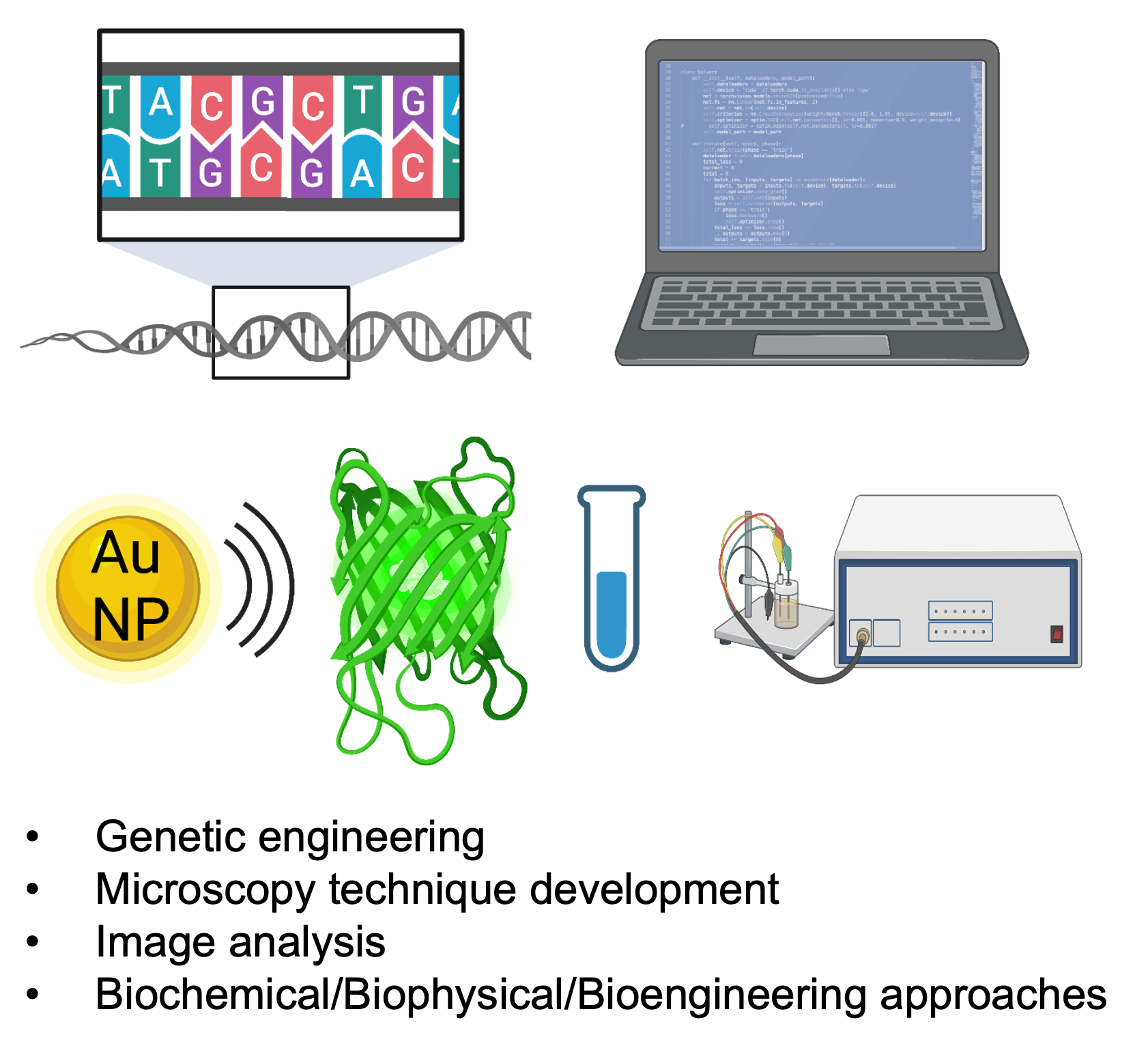What we study
Molecular mechanisms of bacterial responses to external stimuli
To overcome the challenge of antibiotic resistance emerging in recent years, it is critical to gain molecular level understanding of important biological processes in microbes to develop novel drug targets. Metal ions are essential elements for bacterial survival and metal homeostasis needs tight regulation. Compromising the bacterial metal homeostasis can help us develop more efficient antimicrobial treatment, therefore, understanding how bacteria regulate cellular metal concentration is both fundamentally interesting and clinically relevant. Our lab aims to employ the unique advantage of single-molecule live-cell microscopy to investigate how different bacteria responds to external metal ion stimuli. Particularly, we are interested in how metal sensing/import/export/trafficking protein complexes function in live cells, and how the metal regulation system is cooperating with other cellular machineries, like the chemotaxis network, for cell survival.
Host-pathogen interaction studied with super-resolution microscopy
The importance of gut microbiome in relation to human health has been more and more recognized in recent years. Mammalian cells have developed numerous strategies to fight against pathogen invasion. One such strategy is called Nutritional Immunity, where metal ions are competed among host and pathogens. Previous studies on host-pathogen interactions and nutritional immunity are mostly done in vitro, in bulk or only with one type of cells, therefore imaging in relevant environment remains elusive. Our lab aims to explore how bacteria and mammalian cells respond to each other during infection process in a co-cultured configuration, which mimics the real gut microbiome environment. Specifically, how pathogens sense and responds to nutritional immunity, how biofilm initiates spatially and temporally will be studied.
Multimodal imaging to study inorganic-microbial hybrid systems
Microbial electrosynthesis is becoming an attractive sustainable energy source in the past few decades, combining electricity from renewable energy with the microbes capable of synthesizing value-added chemicals. Understanding the electron transfer mechanisms in situ in the hybrid system is critical for eventually enhancing the total energy conversion efficiency. Yet, it is very challenging to study due to the heterogeneity of both inorganic materials and microbes, and the lack of appropriate tools. With an innovative novel multimodal imaging platform, our lab aims to investigate the underlying electron transfer mechanisms at the cellular interface with single-cell and sub-cell resolution.
How we study
We mainly employ the powerful single-molecule super-resolution microscopy to look at numerous biological and material systems. Combining microscopy with many other approaches, such as dynamic tracking, genetic engineering, microfluidic device, nanomaterials, electrochemical measurement and image analysis development, we can achieve multifunctional imaging with higher sensitivity and resolution, revealing novel scientific information that is unknown before.
Tracking single proteins in live E. coli with super-resolution.
Super-resolution microscopy





